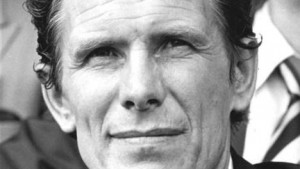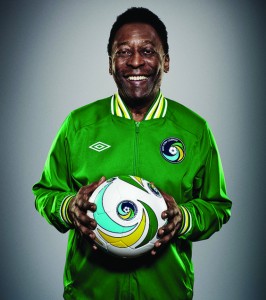Why more coaches should use ‘The Coerver Method’ for soccer player development
 I remember the day like it was yesterday. I was at the Virginia Youth Soccer Association annual workshop and convention, and the Reedswain booth was calling my name.
I remember the day like it was yesterday. I was at the Virginia Youth Soccer Association annual workshop and convention, and the Reedswain booth was calling my name.

Wiel Coerver
Video after video, neatly organized on the display table, drawing coaches like bees to honey. George H. Bush was president – not his son – and my love of the Coerver coaching method was underway.
If you’re unfamiliar with Wiel Coerver, you are certainly familiar with some of his teaching methods. A former Dutch player and coach, he died in 2011. And while he was once a professional, his lasting impact was his Coerver Method.
Today, his most popular protégé is Arjen Robben, the Dutch international and Bayern Munich star that has brought the position of wing back into popularity.
+Read: Creating an early engagement model in North American youth soccer

Arjen Robben
“The origins of Robben’s unique quick-footed, skillful and pacey attacking play can be traced back to his early training as a youngster in his home town of Bedum under the guidance of a forgotten hero of Dutch football: Wiel Coerver,” writes Five in the Midfield’s Joe Sharratt. “Coerver’s innovative coaching techniques have since spread around the world, and influenced the game at all levels, from the top professional leagues all the way down to the school yard. Yet Robben perhaps remains his most famous graduate.”
Coerver first developed his method in the 1970s at a time when, outside of The Netherlands and Brazil, much of international soccer was physical, cynical and often unattractive. The culmination of this attitude is best represented in the semifinals of the 1982 World Cup, when West Germany goalkeeper Harold Schumacher got away with one of the most egregious fouls in international soccer. His collision with France’s Patrick Battiston is still painful to watch.
+Read: Poaching vs. Coaching: Can you tell the difference?
“Battiston would eventually be stretchered from the field and require oxygen after a hit that knocked out two teeth, cracked three ribs, and left the French player with a damaged vertebrae. Battiston didn’t regain consciousness for 30 minutes and eventually slipped into a coma,” recalls ProSoccerTalk’s Richard Farley.
What Schumacher’s foul was to ugly soccer, the Coerver Method is to The Beautiful Game. Based on individual technical skill, intelligence and creativity, Wiel Coerver’s approach to training players dramatically altered the way many youth coaches developed their practices.

Pelé | Photo courtesy of the New York Cosmos
“The Coerver Method focuses on individual skill progression, and the development of tactical awareness through drills carried out in small groups,” writes Sharratt. “Its commanding philosophy is one of control over the ball, and it was developed through Coerver analysing hour upon hour of footage of some of the game’s greatest ever players. Pele was known to be a particular inspiration, and through immersing himself in his project, Coerver came to believe that incredible skill was not simply innate, but could be taught.”
+Read: How the business of youth soccer changed the player-coach relationship
Pele is just one player from whom Coerver drew inspiration. Think Garrincha. Cruyff. Van Basten. Maradonna. I highly encourage young players (after getting mom’s or dad’s permission!) to get on YouTube and search for highlights of these amazing players.
I was transfixed by the Coerver Method videos (this is the early 90s, remember. No such thing as DVD, and my WalkMan worked just fine.) Newly married, I would sit on the couch for hours taking notes, later I would attempt to perfect each move on the living room carpet while Mrs. Doc shook her head in amusement.
I couldn’t wait to show each move to the eight- and nine-year-olds on my BRYC Warhawks team.
To this day, I remain a Coerver Method apprentice. I’ve coached or trained a dozen or so teams since then, and each received a crash course on how to receive a ball, how to defeat a defender 1 vs. 1, how to combine with one, two or three other players. During indoor games, I would establish rules that the kids generally enjoyed but drove the parents a bit crazy: “you have to beat a defender with a scissors” or “you have to shoot directly off a 1-2.”
Sometimes kids would find themselves open for a shot but would stop and wait to take on a defender before doing so. To this day I can still see some of the dads putting palms to cheeks and probably thinking, “What is Joe doing?”
+Read: Manchester United’s Tony Strudwick shares youth development philosophy
Coerver Method critics would cite that as an example. Friends and coaching colleagues argue that those who teach the method on a full-time basis overemphasize the techniques. Too many coaches, these critics argue, fail to teach the second half of the concept, which is determining when to use the skills, and where to do them.
So my “you need to beat a defender before shooting” rule would be unwise, they would say, if a player has a wide-open shot on frame.
And they have a point. Having a U-16 player stop, wait for a defender, try and move, and then shoot makes no sense. However, asking a U-9 player to do so does make sense. Individual technical skill ought to be the focus for that age group, not Barca’s Tiki-Taka possession game. Artificially creating a 1 vs. 1 scenario for a U-9 player in a meaningless indoor game forces that player to use the skills she has learned at practice, and to do so under pressure. It’s exactly the right time to do it.
+Read: For the young player, details matter
One of my favorite moments is when I applaud a player for making a move that beat a defender, but the player doesn’t remember dong the move. He just did it. It’s a part of his game, like breathing when running.
Watch any successful professional team, and you’ll see the importance of developing such skill. Foundationally, ball movement is crucial. But the ability to beat a player on the dribble forces the domino effect that defenders hate. When one defender is beaten, another must step up to defend – and in doing so, creates a passing option for the dribbling player. The possession game benefits by the dribble penetration.
The Coerver Method is not all there is to the game. But it can be an important element. At a time when defenders are attackers, center backs are initiating attacks and goalkeepers are used as an 11th field player, technical skill is demanded from every player.
I never need to dust off my Coerver tapes. They’re always at the ready.
SOCCERWIRE MARKETPLACE
- The St. James FC Virginia 2024-2025 Travel Tryouts
- TSJFCV - Hiring Travel Soccer Coaches
- Hiring: U13-U19 Boys Director
- Coaches Needed
- Train with professional AC Milan coach
- Loudoun Soccer 2024/25 Travel Player Placement Sessions
- Official Elite Summer Soccer Camps with Elite Pro Clubs in Europe
- Official EPL Tickets: ARSENAL, LIVERPOOL, TOTTENHAM & MORE
- Travel to Denmark for Dana Cup Hjørring 2024
- New England Surf Challenge and Showcase 2024











